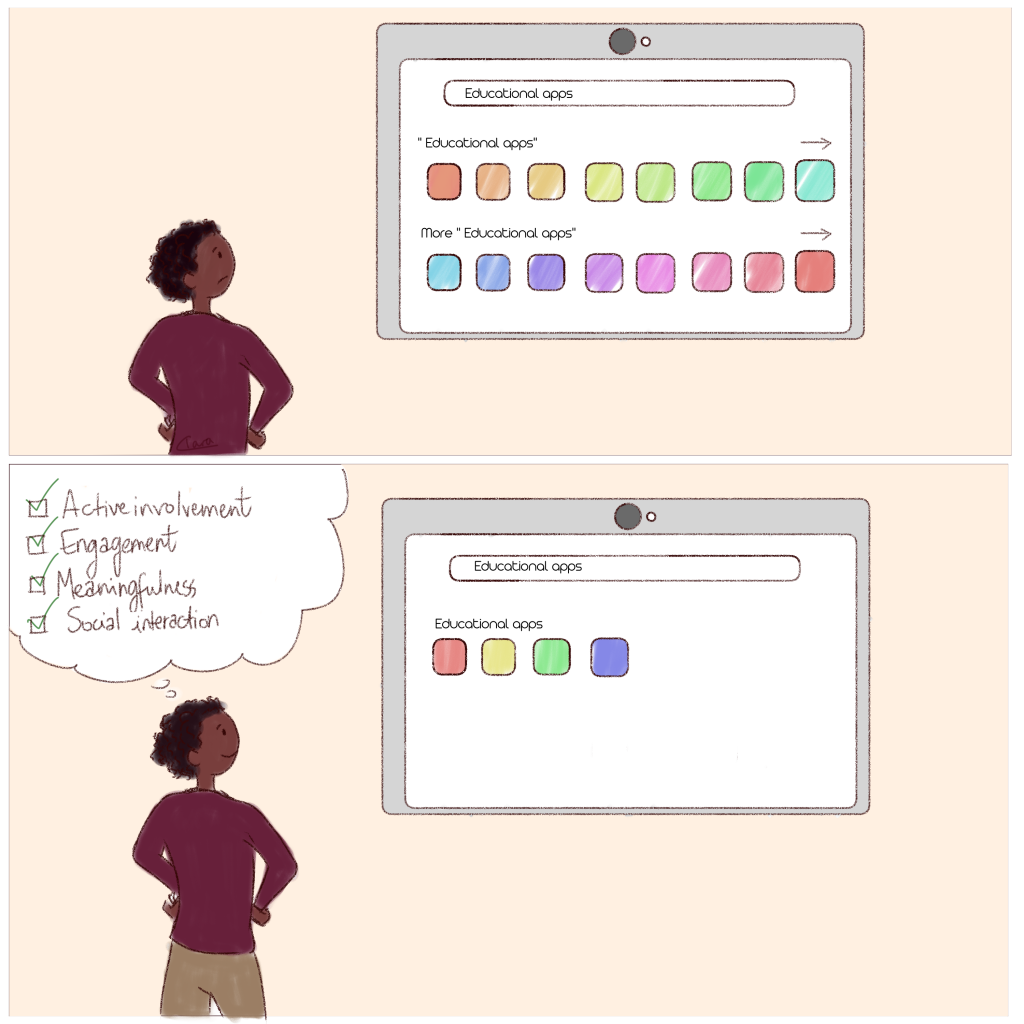Are apps in the educational category online really ‘educational’?

When it comes to toys, games, or apps for children, education is a big seller. Yet, there is very little oversight as to what gets categorized as ‘educational’. We expect a product that is educational to have passed stringent scientific testing, but something you find in the Education category may actually be just as educational as one another category like Entertainment.
App choices, in particular, can be daunting, with the sheer choice available. We have therefore created a checklist of four science-based principles you can use to evaluate the educational value of an app. So get your lab coats on and clipboards ready!
① Active involvement: Getting a child involved in content actively promotes learning in ways that passive listening or watching do not (see Is there a way to integrate some screen time into my child’s day?). Apps that require a child to act in a thought out way, such as fitting shapes into corresponding holes or answering questions, are considered to be active.
② Engagement: Focus on a task is an important starting point for learning, because it allows children to have more one-on-one time with novel content. Apps that promote staying on-task and present content in an uncluttered fashion will allow for more learning than those with flashy irrelevant images and loud distracting sounds.
③ Meaningfulness: Apps that connect new content with a child’s experiences or to her everyday life allow a child to create links between all the things she is learning about. Connections between new content and what a child knows and sees are a great way to build and solidify knowledge.
④ Social interaction: Social interaction between a child and adults or peers is the foundation of learning (see How to foster word learning?). Apps that incorporate interactions by encouraging looking at the app together (see next week’s comic!) rank the highest, followed by those that present interactive characters or avatars.
In short, the very same principles a caregiver can use to guide their child’s language development in general can be used to pick a truly educational app!
The scientific sources for our comic:
